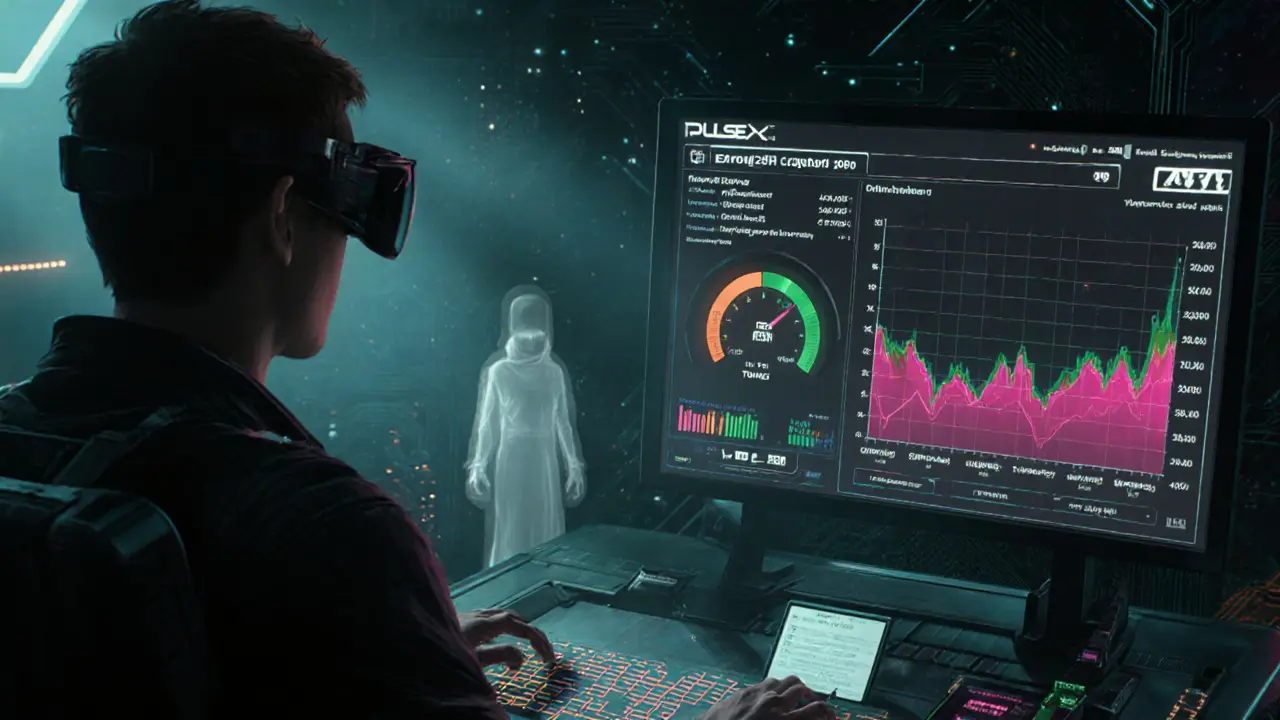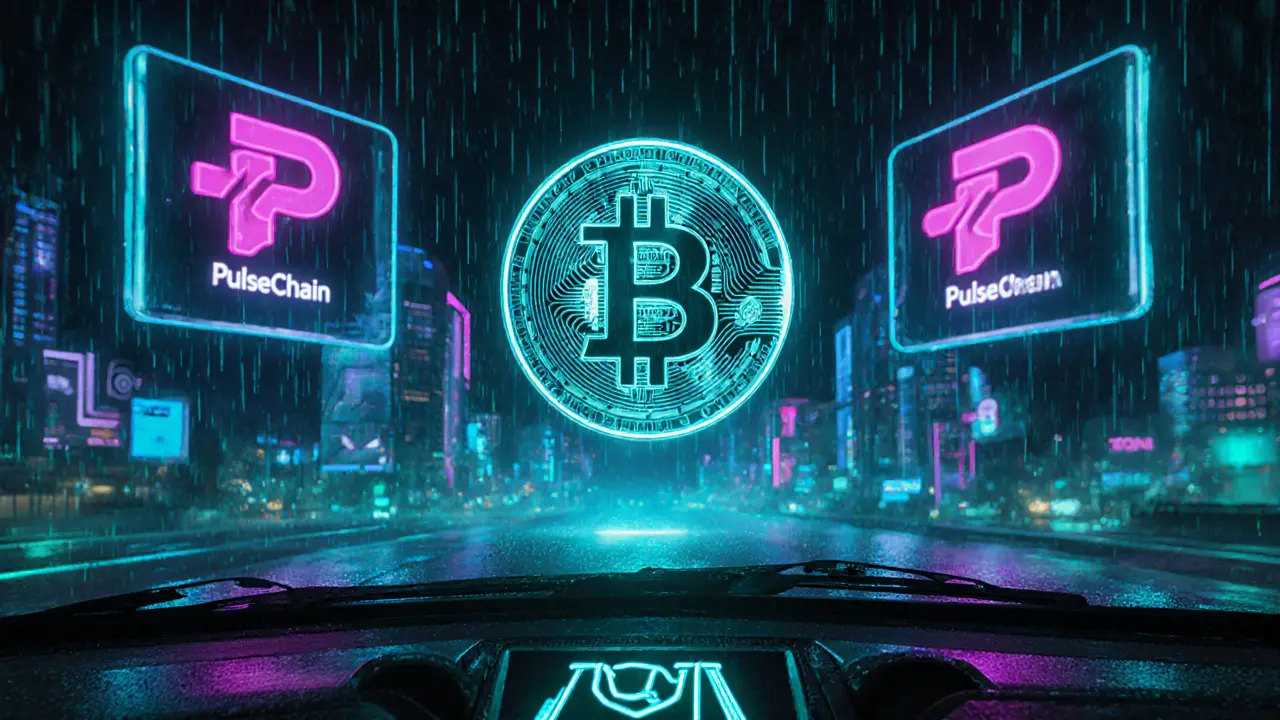TONI Trading Slippage Calculator
How Trading Slippage Works
Slippage occurs when trading large amounts in low-liquidity pools. TONI has extremely limited liquidity on PulseChain, with the DAI/TONI pool showing just $192 in 24-hour volume. This calculator helps you understand potential price impact when trading TONI.
Estimated Slippage:
0.00%
Based on current pool liquidity of $192 and your trade amount
Key Takeaways
- Daytona Finance (TONI) is a niche DeFi token built exclusively on PulseChain.
- The token has a total supply of 22.8 million but a reported circulating supply of zero, which means its market cap is effectively $0.
- Trading only happens on PulseChain‑based DEXs like PulseX, with very low daily volume and limited liquidity.
- There are no listings on major centralized exchanges, no official roadmap, and scant community activity.
- Investors should treat TONI as a high‑risk, speculative token unless they need exposure to PulseChain’s experimental ecosystem.
What Is Daytona Finance (TONI)?
Daytona Finance (TONI) is a decentralized finance (DeFi) cryptocurrency that lives solely on the PulseChain network. Launched in 2023, the project markets itself as a yield‑farming token that aims to take advantage of PulseChain’s low‑fee, high‑throughput environment.
Unlike most DeFi projects that spread across Ethereum, BNB Chain, or multiple blockchains, TONI never leaves PulseChain. That design choice makes it easy to integrate with PulseChain’s native tools, but it also caps the token’s audience to a very small, technically‑savvy crowd.
Token Basics: Supply, Launch, and Platform
The total supply of TONI is fixed at 22,805,321 tokens. Strangely, every major data aggregator - Coinbase, CoinMarketCap, and CoinGecko - lists the circulating supply as zero. In practice, this means the token’s market capitalization is reported as $0, even though a handful of tokens have been allocated for early participants.
Because TONI follows the ERC‑20 standard adapted for PulseChain’s EVM‑compatible environment, it behaves like most Ethereum‑style tokens. However, no cross‑chain bridges have been announced, so moving TONI to other blockchains isn’t possible without a custom bridge built by the community.
PulseChain itself is an Ethereum fork that launched in 2023 with the goal of offering cheaper gas and faster block times. It currently sits around the #38 spot by market cap, far behind Ethereum but still sizable enough to host a few niche projects like TONI.

How TONI Works: Yield Farming on PulseChain
Yield farming is the process of locking up crypto assets in a smart contract to earn rewards - usually in the form of additional tokens or a share of transaction fees. Daytona Finance’s smart contracts promise a share of fees generated on PulseX, the primary DEX on PulseChain.
The token’s reward model is simple on paper: stake TONI in a liquidity pool (for example, TONI/USDC or TONI/DAI) and collect a portion of the swap fees. In reality, the pools are tiny. The DAI/TONI pool on PulseX v2, for instance, recorded just $192 in 24‑hour volume on the day of the latest snapshot. That low activity heavily dilutes any potential yield, making the promised “high returns” more theoretical than practical.
Because the contract code is publicly available on PulseChain’s block explorer, anyone can verify that the token is not mineable or pre‑mined - the supply distribution happened through a private allocation before the public launch. No team details, roadmap, or audit reports are posted, which leaves investors guessing about the legitimacy of the reward mechanics.
Where and How to Trade TONI
Trading TONI is a niche endeavor. The only places you’ll find it are PulseChain‑based decentralized exchanges, primarily PulseX v1 and PulseX v2. The common trading pairs include:
- HEX/TONI
- DAI/TONI
- TONI/INC
- TONI/USDC
All major centralized platforms - Coinbase, Binance, Kraken - openly state that TONI is not listed. That means you can’t buy it with fiat or a credit card; you must first hold a PulseChain‑compatible wallet (MetaMask, PulseX Wallet, or similar), load it with PLN (PulseChain’s native gas token), and then interact with the DEX.
The price gap across aggregators is notable. On the day of the latest data (October 26 2025), Coinbase showed $0.0018 per TONI, whereas CoinGecko and CoinMarketCap hovered around $0.0004. Trading volumes ranged from a low $268 on Crypto.com to $4,176 on Coinbase for the tiny slice of the market that does exist.
Risks, Criticisms, and Why TONI Is Considered High‑Risk
1. Lack of Liquidity - With daily volumes under $1,000 for most pairs, even a modest trade can cause large slippage. The token’s order books are shallow, meaning you might not be able to exit a position at the price you expect.
2. No Centralized Exchange Exposure - Absence from big exchanges makes it harder for new users to discover the token and limits price discovery.
3. Zero Circulating Supply Reporting - All major trackers list a circulating supply of zero, which casts doubt on how many tokens are actually in the wild.
4. Scant Community Presence - Searches on Reddit, Bitcointalk, and major crypto forums return almost no discussion about TONI. When a token has no active community, support and updates dry up quickly.
5. Unclear Regulatory Standing - PulseChain operates in a legal gray area, and there’s no specific guidance on tokens that exist only on these forks. This adds another layer of uncertainty for investors.
Overall, the token looks more like an experimental test‑case than a serious investment vehicle. If you’re looking for stable DeFi yields, projects on Ethereum, BNB Chain, or even Solana typically offer deeper liquidity and audited contracts.

Step‑By‑Step: How to Acquire and Trade TONI
- Set Up a PulseChain‑compatible wallet. Install MetaMask, then add the PulseChain network using the RPC URL (e.g., https://rpc.pulsechain.com). Alternatively, use the native PulseX Wallet app.
- Buy PLN for gas. You can acquire PLN on larger DEXs that support cross‑chain bridges, then transfer it to your PulseChain wallet.
- Bridge assets (if needed). If you already own ETH or USDC on Ethereum, use a bridge like “PulseBridge” to move them onto PulseChain.
- Visit PulseX. Go to the PulseX interface (https://pulsex.com) and connect your wallet.
- Select a TONI pair. Choose a pair with the most volume (e.g., TONI/USDC) and click “Swap”.
- Enter the amount. Because liquidity is thin, start with a tiny amount (e.g., 10 TONI) to test slippage.
- Confirm the transaction. Approve the gas fee in PLN and wait for the transaction to finalize on the PulseChain block explorer.
- Stake for yield (optional). If you want to earn fees, add your TONI to a liquidity pool on PulseX and claim the reward tokens that accumulate.
For a complete beginner, expect to spend 2‑4 hours on this whole process, mostly on wallet configuration and bridge delays.
How TONI Stacks Up Against Other PulseChain DeFi Tokens
| Token | Main Goal | Total Supply | Market Cap (Oct 2025) | Exchange Availability |
|---|---|---|---|---|
| TONI | Yield farming on PulseX | 22,805,321 | ≈ $0 (0 circulating) | PulseX v1 & v2 only |
| PulseCHAIN (PLS) | Network token for PulseChain | 1,500,000,000 | ≈ $302 M | Centralized & DEXs (Binance, KuCoin, PulseX) |
| PulseX (PULSEX) | Governance & fee token for PulseX DEX | 100,000,000 | ≈ $12 M | PulseX DEX, few CEXs |
From the table you can see TONI’s market presence is a fraction of even the smallest native PulseChain token. If you need liquidity or broader exposure, PLS or PULSEX are far more practical choices.
Frequently Asked Questions
What is the purpose of Daytona Finance (TONI)?
TONI is meant to be a yield‑farm token that lets users earn a share of transaction fees on PulseX, the main DEX for the PulseChain network.
Where can I buy TONI?
You can only buy TONI on PulseChain‑based decentralized exchanges like PulseX. First set up a PulseChain wallet, fund it with PLN for gas, then trade the TONI/USDC or TONI/DAI pair.
Why does TONI show a circulating supply of zero?
All major trackers list zero circulating supply because the project hasn’t disclosed any tokens in the public hands. The total supply exists on‑chain, but no amount is officially counted as circulating.
Is TONI a good long‑term investment?
Given the near‑zero liquidity, lack of exchange listings, and minimal community activity, TONI is considered a very high‑risk speculative token. Most analysts would suggest avoiding it unless you specifically want exposure to PulseChain’s experimental side.
How does TONI differ from other DeFi tokens on Ethereum?
TONI runs only on PulseChain, while most DeFi tokens live on Ethereum or BNB Chain and are listed on many centralized exchanges. This isolation limits TONI’s user base, liquidity, and price discovery compared to Ethereum‑based tokens.

Rohit Sreenath
October 26, 2025 AT 09:40PulseChain keeps spawning micro‑tokens that promise big yields but deliver almost nothing. The allure of "high returns" masks the fact that liquidity is practically nonexistent. Anyone who thinks otherwise is chasing a mirage. The token economics are thin, and the supposed community is a ghost town.
Sam Kessler
October 26, 2025 AT 10:50The entire construct of TONI is a textbook example of a token engineered to siphon capital into opaque smart contracts, likely orchestrated by a cabal of developers operating under the veil of anonymity. Their deployment on PulseChain, a fork with questionable regulatory compliance, suggests a deliberate attempt to evade oversight. By limiting exposure to centralized exchanges, they effectively create a closed ecosystem where price manipulation can occur unchecked. This aligns with known patterns of market‑making entities exploiting low‑volume platforms to inflate perceived value.
Steve Roberts
October 26, 2025 AT 12:00While most analysts dismiss TONI as a dead‑end, I see a subtle opportunity hidden in its scarcity. The zero circulating supply claim could be a reporting glitch rather than a red flag, meaning early adopters might hold an unnoticed stash. Moreover, the token's integration with PulseX could become valuable if PulseChain gains broader traction. So I’d argue it’s premature to write it off entirely.
John Dixon
October 26, 2025 AT 13:10Oh sure, because everyone loves a token with $0 market cap and a liquidity pool that moves slower than a snail on a treadmill!!! It's practically a gift to those who enjoy watching their slippage skyrocket with each trade!!!
Brody Dixon
October 26, 2025 AT 14:20If you’re just starting, take it slow and only allocate what you can afford to lose; the risk level here is off the charts, so patience and caution are your best tools.
Mike Kimberly
October 26, 2025 AT 15:30Daytona Finance, identified by the ticker TONI, presents itself as a niche DeFi project operating exclusively on the PulseChain network. Its total supply of roughly twenty‑two million eight hundred thousand tokens is fixed, yet the majority of those tokens remain invisible to mainstream data aggregators, resulting in a reported circulating supply of zero. This discrepancy raises immediate questions regarding the transparency of token distribution and the mechanisms by which holders can obtain the asset. The token’s primary utility is tied to yield farming on the PulseX decentralized exchange, where participants stake TONI in liquidity pools to earn a share of transaction fees. In practice, however, the available pools are shallow, with daily swap volumes measured in mere hundreds of dollars, thereby diluting any prospective returns to negligible levels. From a technical perspective, TONI adheres to the ERC‑20 standard adapted for PulseChain’s EVM‑compatible environment, meaning that it can interact with existing smart contract tooling without modification. Nonetheless, the absence of cross‑chain bridges restricts any possibility of moving the token beyond PulseChain, effectively isolating it within a relatively small ecosystem. The project's documentation offers no audited code, roadmap, or identifiable team members, a fact that many seasoned investors regard as a significant red flag. Liquidity concerns are further compounded by the token’s exclusion from major centralized exchanges, which limits price discovery and forces traders to rely on fragmented DEX data. Price differentials observed across aggregators such as CoinGecko and CoinMarketCap illustrate the market’s inefficiency and the potential for arbitrage, albeit with prohibitive slippage. Regulatory ambiguity surrounding PulseChain adds another layer of uncertainty, as the network operates in a legal gray area without clear guidance from financial authorities. Investors seeking stable DeFi yields would typically gravitate toward platforms on Ethereum, BNB Chain, or Solana, where liquidity, audit reports, and community support are more robust. Conversely, participants with a specific interest in experimental blockchain projects may find value in exploring TONI as a case study of niche token dynamics. In summary, the token embodies high risk, limited utility, and an opaque operational model, characteristics that should prompt thorough due diligence before any capital allocation. Ultimately, whether TONI serves as a speculative petri dish or a fleeting opportunity depends on future developments within PulseChain and the broader DeFi landscape.
angela sastre
October 26, 2025 AT 16:40To buy TONI you first need a PulseChain wallet, then fund it with PLN for gas, and finally trade on PulseX using the TONI/USDC pair; the steps are straightforward but require patience.
Aniket Sable
October 26, 2025 AT 17:50Yo, dont stress the low volume too much, if you just want to test the waters put a tiny amount and see how it goes!
Santosh harnaval
October 26, 2025 AT 19:00Liquidity is so thin you’ll see big price swings on tiny trades.
Claymore girl Claymoreanime
October 26, 2025 AT 20:10When elite DeFi analysts assess a token like TONI, they immediately spot the structural flaws: a sealed blockchain environment, zero listed circulation, and an ecosystem that refuses mainstream exchange integration, all of which indicate a deliberate design to control token flow and conceal true market depth.
Will Atkinson
October 26, 2025 AT 21:20Hey folks, just a heads‑up: if you decide to dip your toes into TONI, expect wildly varying slippage, scarce order books, and a community that’s more of a whisper than a roar!!!
Alex Horville
October 26, 2025 AT 22:30From an American perspective, supporting home‑grown ecosystems feels safer, but chasing a token built on a foreign fork like PulseChain feels like a gamble that doesn’t align with national interests.
Abby Gonzales Hoffman
October 26, 2025 AT 23:40If you’re curious about the mechanics behind yield farming on PulseX, start by reviewing the smart contract code on the explorer; understanding fee distribution can give you confidence before you allocate any funds.
ashish ramani
October 27, 2025 AT 00:50Please remember to keep your investment size small until you become familiar with the platform’s quirks and the token’s behavior.
Jennifer Rosada
October 27, 2025 AT 02:00In consideration of the aforementioned factors-including negligible liquidity, absent audit reports, and limited exchange exposure-it is my professional recommendation to abstain from any substantial investment in TONI at this juncture.